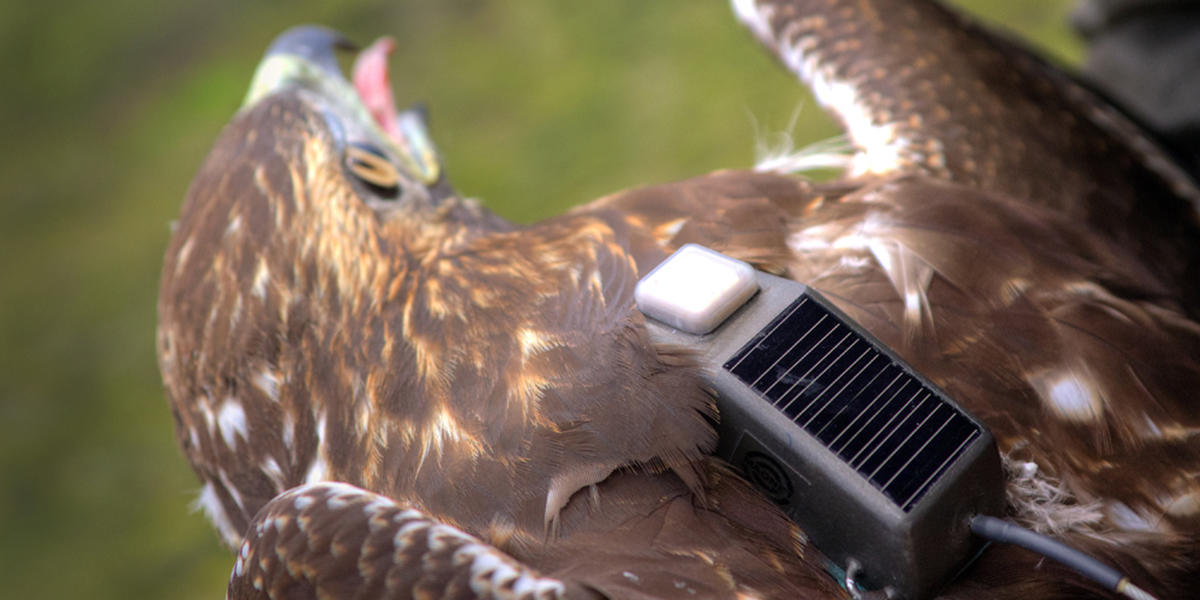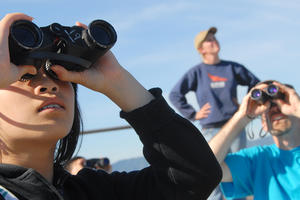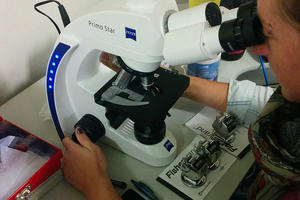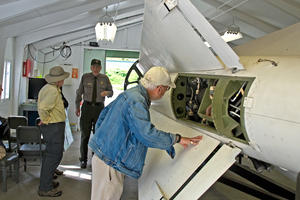
RADIO TRACKING
GGRO’s telemetry program began in November 1990 with the idea that it wasn’t enough to count or band birds. We wanted a more complete picture of raptor movements between banding and recovery so we turned to radio telemetry, one of the favorite tools of wildlife research at the time. Though radio tracking is much less costly than satellite tracking, it is incredibly time intensive and less accurate than GSM and GPS transmitters. In 2017, the GGRO radio tracking moved away from active tracking to start digitizing and analyzing data collected thus far.
GSM TRACKING
GPS and GSM (cell phone) technologies are not new—but they have only lately been combined into a new transmitter that aids wildlife research. This device utilizes GPS technology that is similar to a hand-held or car GPS unit, and uses cell phone networks to send the hawk’s locations. A solar cell recharges the battery, so the unit can function for up to two years.
GSM units don’t provide as many locations per day as our traditional radiotelemetry research, which can track a bird constantly throughout the day. However, with this unit, we can get data for a much longer period of time. Location data for a hawk may not be available if she is out of cell range, or if cloud cover or other impediments block a good GPS reading.
We have tracked fourteen Red-tailed Hawks and one Peregrine Falcon over four seasons using GSM technology. We have also placed transmitters on two Turkey Vultures as part of our Turkey Vulture Research Program.
VIEW MOVEMENT DATA
Use the links below to view movement data from some of the GSM transmitter-tracked raptors.
Augusta - Red-tailed Hawk - Deployed 8/24/2012
Delilah - Red-tailed Hawk - Deployed 11/21/2012
Fargo - Red-tailed Hawk - Deployed 8/26/2013
Guess - Red-tailed Hawk - Deployed 9/12/2013
Juanita - Red-tailed Hawk - Deployed 12/4/2013
Mills - Red-tailed Hawk - Deployed 9/15/2014
TUVU368 - Turkey Vulture - Deployed 1/19/2018












